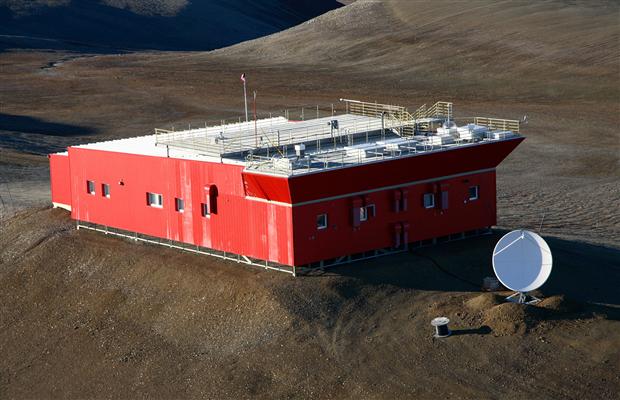Feds to spend $32 million on Arctic climate change projects
Money saves High Arctic lab threatened with closure

The Polar Environment Atmospheric Research Laboratory near Eureka on Ellesmere Island is among five projects that can now count on money from Canada’s Climate Change and Atmospheric Research program. (FILE PHOTO)
Scientists behind seven environmental projects learned May 17 that they will share a total of $32 million over five years from the federal government’s Climate Change and Atmospheric Research program.
The money will support teams composed of university researchers, scientists and partner organizations to advance understanding of climate and the risks related to climate change, a May 17 news release said.
The money saves the Polar Environment Atmospheric Research Laboratory near Eureka on Ellesmere Island, a facility threatened with closure in 2012 when its funding ran out.
Before 2012, the laboratory, known as PEARL, had operated continuously since 2005, gathering data on air quality, atmospheric chemistry, ozone and climate changes.
Other research projects, each known by an acronym, will receive grants of up to $5 million over a maximum of five years:
• Network on Climate and Aerosols (NETCARE): Addressing Key Uncertainties in Remote Canadian Environments — scientists will use measurements and modelling to identify the sources and impacts of the tiny air particles known as aerosols, especially black carbon or soot. It will also explore the role the ocean plays as a natural source of aerosols and look at the formation of ice clouds and their impact on the atmosphere;
• Canadian Arctic GEOTRACES Program: Biogeochemical and Tracer Study of a Rapidly Changing Arctic Ocean — scientists will measure chemicals that will provide information on these key processes in the Arctic;
• Canadian Sea Ice and Snow Evolution (CanSISE) Network — Canadian and international scientists will use analysis and computer models to improve prediction of snow and sea ice in the Arctic, sub-Arctic, alpine and seasonally snow-covered region
• Ventilation, Interactions and Transports Across the Labrador Sea (VITALS) — scientists will look at how the deep ocean exchanges carbon dioxide, oxygen and heat with the atmosphere in the Labrador Sea.;
• Canadian Network for Regional Climate and Weather Processes — scientists will use high-resolution models of climate and weather simulations, particularly those representing weather extremes, to improve weather prediction and climate change projections; and,
• Changing Cold Regions Network (CCRN) Climate Change and Atmospheric Research — scientists will use modelling and remote sensing products to better understand and predict changes to land, water and climate.




(0) Comments